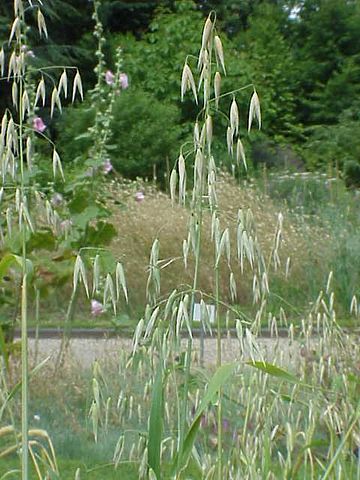Common wild oat, scientifically known as Avena fatua, is a problematic weed that affects agricultural fields and natural ecosystems. Here are some key facts about common wild oat and its impact:
Identification:
Common wild oat is an annual grass weed that closely resembles cultivated oats (Avena sativa). It can grow up to 3 feet tall and has elongated seed heads that contain multiple spikelets.
Distribution:
Common wild oat is found in various regions around the world, including North America, Europe, Asia, and Australia. It is particularly prevalent in temperate and Mediterranean climates.
Life Cycle:
It follows an annual life cycle, germinating in the fall or spring and producing seeds within a single growing season.
Reproduction:
Common wild oat reproduces primarily by seeds. Each plant can produce thousands of seeds, which are easily dispersed by wind, water, animals, and human activities.
Impact on Agriculture:
Competition: Common wild oat competes with cultivated crops, such as wheat, barley, and oats, for nutrients, water, and sunlight, leading to reduced crop yields.
Seed Contamination: The seeds of common wild oat can contaminate harvested crop seeds, making them less valuable and marketable.
Herbicide Resistance: Over time, common wild oat populations have developed resistance to various herbicides, making control more challenging for farmers.
Ecological Impact:
Displacement of Native Species: In natural ecosystems, common wild oat can displace native plant species, reducing biodiversity.
Altered Ecosystem Function: Its presence can alter ecosystem processes, such as nutrient cycling and water availability, affecting the overall health of natural areas.
Management and Control:
Cultural Practices: Crop rotation and planting competitive crops can help reduce common wild oat infestations.
Herbicides: Herbicides are often used to control common wild oat in agricultural settings, although resistance is a growing concern.
Mechanical Control: In some cases, mechanical methods like mowing or tilling may be used to manage infestations.
Biological Control: Researchers have explored the potential for biological control agents, such as insects or pathogens, to suppress common wild oat populations.
Resistant Varieties:
Some crop varieties have been developed to be resistant to common wild oat, reducing the need for chemical control.
Integrated Pest Management (IPM):
Many farmers use IPM strategies, which combine various control methods to effectively manage common wild oat while minimizing the environmental impact and herbicide resistance development.
Global Economic Impact:
The presence of common wild oat in agricultural fields results in significant economic losses due to reduced crop yields, increased herbicide use, and the cost of control measures.
In summary, common wild oat is a troublesome weed that affects both agricultural productivity and natural ecosystems. Its prolific seed production, adaptability, and herbicide resistance make it a challenging pest to manage. Effective control strategies often involve a combination of cultural, chemical, and biological methods, along with a focus on preventing herbicide resistance.










